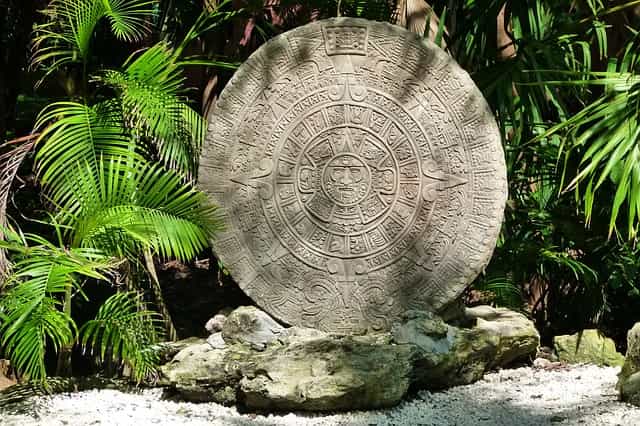The myths of the Conquest that need to be cleared up
The commemoration of the 500th anniversary of the fall of Mexico-Tenochtitlan opens a new door to rethink and rewrite the history of the origins of present-day Mexico. It is an opportunity to put an end to myths or biased visions.

Five centuries have passed since the end of Aztec domination, a decline in which both indigenous and Spaniards played a role. The commemoration of the 500th anniversary of the fall of Mexico-Tenochtitlan opens a new door to rethink and rewrite the history of the origins of present-day Mexico. It is an opportunity to put an end to myths or skewed perceptions.
For example, to understand that the Spanish Conquest was a process of several centuries and not just a few years or a single night, that the fall of the Aztec empire was achieved by the alliances of the Spanish with indigenous groups fed up with the Mexica yoke, that the Spanish defeated the natives not with weapons but with great epidemics that lasted for centuries, that the Malinche was not a traitor to her indigenous roots but was given as a gift to Cortés and along with her many other women participated in the process of conquest as translators.
Breaking with these inaccurate ideas about the fall of Tenochtitlan will allow changing the defeatist vision that affirms that the indigenous were the defeated and the current idea of considering the Spaniards as an enemy. Historians Rodrigo Martínez Baracs, Alejandro Fujigak, and Federico Navarrete agree on this proposal, and in a separate interview, they reflect on the commemoration of the fall of Tenochtitlan.
"There was no Spanish conquest of Mexico," says historian Federico Navarrete. The war from 1519 to 1521, which ended with the fall of Mexico-Tenochtitlan on August 13, 500 years ago, cannot be considered a Spanish conquest, but rather the beginning of a process of colonization and, eventually, the imposition of Spanish rule. The Conquest that is now being commemorated strictly speaking did not exist.
"The first thing to say is that there was no Spanish conquest, that is false. The Spaniards participated in an army that was 99 percent indigenous and that army was the one that defeated the Mexica, and neither was it a conquest of Mexico because the defeat was of a single people that although it was the most powerful, the Mexica, it did not mean a conquest of an entire country", explains in an interview the doctor in Mesoamerican Studies from the UNAM.
Navarrete's reading is based on the idea that in reality, the Conquest was an extensive period of social, economic, religious, and thought integration, among other elements. It would be false to think that the day after the capture of Cuauhtémoc, the last Aztec emperor, the Indians of territory as vast as Mesoamerica was already dominated by the Europeans: "In no way was it an automatic domination, it is wrong to think that on August 14, 1521, all the Indians were already subdued and the Spaniards ruled all the towns, it was not so," he insists.
After the fall of the Mexican dominion, the most powerful of the time, there followed 20 or 30 years of war in which the Indians were also in the majority and this led to a process of colonial regimentation that lasted until the 19th century. Navarrete considers that non-existent triumphs and indigenous wars are attributed to the Spaniards, which is why the saying that "the Conquest was made by the indigenous people" applies here.
Historian Rodrigo Martínez Baracs agrees, stating that the Conquest, understood as the encounter of two different cultures, began with the arrival of Hernán Cortés in America and continued until the 19th century. "On August 13, 1521, the city of Mexico-Tenochtitlan fell, but this was not the Conquest, it was an emblematic, dramatic moment, which of course was going to have important consequences for the continuation of colonization, for the expansion of the Conquest throughout the territory that is today Mexico and which evidently spread rapidly in areas where there were allies of the Spanish," reflects Martínez Baracs.
So, what is the Conquest, asks the historian and answers immediately: "It is obviously not this day of 1521, but a whole process that accelerates, intensifies from August 13, and the Conquest itself in each of the parts of what is now Mexico occurs when this character appointed by Cortés, the encomendero, arrives to collect tribute, work products either in gold or slaves. That imposition, when a tribute had to be paid to the Spaniards and the new religion had to be accepted, is the Conquest".
Violence and racism
Navarrete adds that the elements associated with the Conquest of the Spanish were actually political or economic changes made by Mexican governments. For example, the decision to take land from the indigenous people was made during the colonial regiment, also the persecution of indigenous languages and the imposition of the Spanish language was made in the governments after Porfirio Diaz, and persecuting indigenous cultures for their integration into the mestizaje was an action that occurred in the 20th century and not precisely in the 16th century.
"We falsely attribute to the Spanish Conquest the total subjugation of the indigenous people, the submission of the cultures and the dispossession of their lands, but these are things that happened much later," he says, pointing out that for many years the story was told from the chronicles of the Spaniards themselves, from the letters of Cortés where he describes himself as the victor.
What can be attributed to the Spaniards, and what ultimately marked the war and the alliances with indigenous people, was the level of violence against civil society. Although the foreigners were fewer in number compared to the indigenous army, they were noted for their aggression with firearms against women, children, and the elderly who were not involved in the war. They were also distinguished by a vertical and racist form of government where the only ones with access to positions of political or religious power were the Spaniards, and, of even greater impact, was their imposition of the Catholic faith as the only religious thought. These characteristics made the minuscule Spanish army, led by Cortés, achieve dominion over the allied lordships.
"This fall, although articulated by the Spaniards, corresponds to previous conflicts of the Mesoamerican peoples. One percent of the entire army that brought down Tenochtitlan were Spanish, 99 percent were indigenous peoples against the Mexica and these conflicts had to do with kinship or some other form of domination of the Mexica themselves towards other peoples," added Alejandro Fujigaki, anthropologist and historian.
Alliances and strategies
The historical proposal that affirms that the Conquest was made by the Indians, not the Spaniards, is supported not only by the number of foreign soldiers (between 700 and 800 in total), but also by the alliances of different lordships fed up with the yoke of the Mexica, a situation that Cortés took advantage of to combine military force with a single objective: to overthrow the great Aztec lordship. The most emblematic example is that of the Tlaxcaltecs, who made the main alliance with the Spaniards. But behind that joint work, the truth is that the natives of this area sought, and at some point succeeded, to manipulate the conquerors in order to put an end to their great enemy, as Navarrete explains when recalling that the Tlaxcaltecs could at some point manipulate the Spaniards.
"When the Spaniards arrived in Tlaxcala and the Tlaxcalans made war on them because they did not want to submit, nor had they submitted to the Aztecs, and they were about to defeat them because they were many more, but the desperate Spaniards began to attack the civilian population at night, they made nocturnal attacks and there they killed old people, women, children and burned houses, After four nights like that, the Tlaxcalans came to negotiate and decided to be their allies with the idea that all the damage that the Spaniards could do, they would do to their enemies the Mexica, so first they took them to Cholula in November 1519 where they massacred five thousand people", says Fujigaki.
This example shows that the alliances between Spaniards and Indians were not a betrayal or subjugation on the part of the lordships, but rather a military strategy to overthrow the Mexica, who then subjected the smaller towns to expensive sacrifices and tribute. Historians agree that the triumph of the Spaniards must be attributed, in addition to alliances and military strategies, to their war technology and, mainly, the diseases that for centuries killed thousands of indigenous people lacking defenses against new viral infections.
From this perspective, we can understand the new reading of historians who affirm that there was not a Conquest as such but a process of several conquests. A period of colonial integration that meant the reconfiguration of the indigenous peoples during three centuries. Therefore, to speak of Conquest is to reflect on the recomposition of political forces, to understand the foundation of a new European monarchy in unknown territory, and to assimilate the reconfiguration of a geopolitical entity and new identities.
Historians agree that the commemoration of the 500th anniversary of the beginning of this colonizing process opens up new perspectives on the past. They allow us not to stick to a single totalizing narrative, but to give way to new readings by understanding that history is dynamic and has multiple visions. "We must recognize all our heritages, the indigenous heritage, the Spanish heritage, the European, African and Asian heritage. Commemorations are important because they allow us to see where we come from," concludes Martínez Baracs.
Source: El Sol de México




